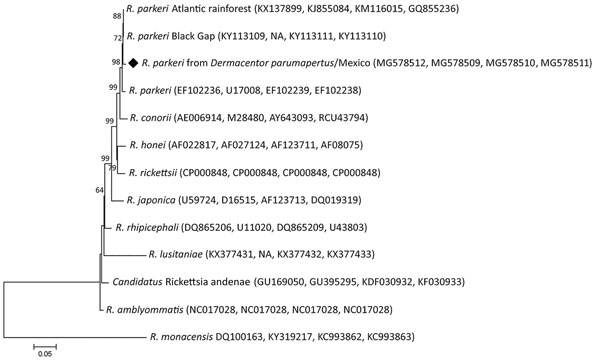Volume 24, Number 6—June 2018
Dispatch
Rickettsia parkeri in Dermacentor parumapertus Ticks, Mexico
Figure 2

Figure 2. Maximum-likelihood phylogenetic tree generated by using the general time-reversible model using discrete gamma distribution for a total of 2,308 bp of the gltA, htrA, ompB, and ompA genes concatenated from a few members of the genus Rickettsia. Diamond indicates isolate obtained from ticks in Mexico. Bootstrap values >50% are indicated at the nodes (−In = −6514.38). Numbers in parentheses are GenBank accession numbers. Scale bar indicates nucleotide substitutions per site. NA, not available.
1These authors contributed equally to this article.
Page created: May 17, 2018
Page updated: May 17, 2018
Page reviewed: May 17, 2018
The conclusions, findings, and opinions expressed by authors contributing to this journal do not necessarily reflect the official position of the U.S. Department of Health and Human Services, the Public Health Service, the Centers for Disease Control and Prevention, or the authors' affiliated institutions. Use of trade names is for identification only and does not imply endorsement by any of the groups named above.